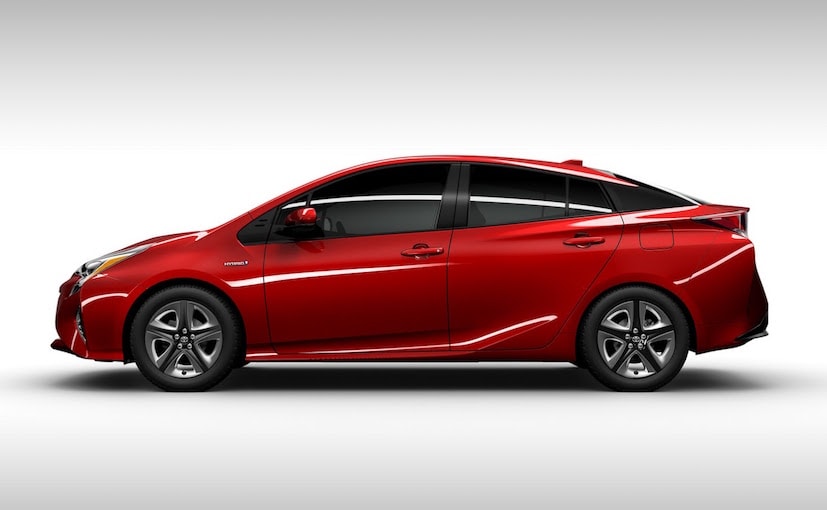Airflow Inside Car May Help Suppress Transmission Of Airborne Diseases Like Coronavirus: Study

Highlights
- Science Advances did a study on airflow pattern inside a car's cabin
- Optimum airflow could help suppress transmission of airborne diseases
- The researchers used computer simulations to determine Air Change Rate
A recent study conducted by Science Advances on airflow pattern inside a car's cabin has shown that having the optimum airflow could help suppress transmission of airborne diseases like the novel coronavirus (SARS-CoV-2) or COVID-19. The researchers used computer simulations to determine airflow pattern and devised six different configurations, from all the windows being completely shut to all the windows open, to measure the Air Change Rate (ACH) inside the cabin. Essentially the volume of air that is circulated inside out on per hour basis. The researchers found the complex fluid dynamics during everyday commutes and non-intuitive ways in which open windows can either increase or suppress airborne transmission.

For the simulation, the researchers used an exterior geometry was based on a Toyota Prius
Now, the study was carried out in the United States where you have Left-Hand Drive (LHD) cars, and the driver sits on the front left side, and the setup was designed in accordance to that. So, it's important to keep that in mind before reading further. We must also mention that the ideal scenario to commute in a car would be to travel alone, however, it's not very practical when economical aspects and sustainability are taken into considerations. So, the next safest option to commute with a passenger would be to have them sit at the rear, diagonally opposite to the driver. The same scenario was considered for the experiment, thus maximizing the physical distance (1.5 m) between the occupants.
Also Read: Personal Mobility To Have Greater Preference Post Coronavirus Pandemic: SIAM Survey

The researchers used computer simulations to determine airflow pattern and devised six different configurations
For the study, the researchers conducted a series of representative Computational Fluid Dynamics (CFD) simulations for a range of ventilation options in a model of a standard four-door passenger car. The exterior geometry was based on a Toyota Prius, and the simulated the flow patterns associated with the moving car, and the windows were named as front-left (FL), rear-left (RL), front- right (FR) and rear-right (RR). For simulation, the occupants were modelled simply as cylinders positioned in the car interior. The study involved six configurations - 1. Where all windows were closed, of course here the car's air-con system was for air circulations; 2. FL and RR are open and the other 2 closed; 3. RL and FR are open and the other two are closed; 4. FL is closed and all other 3 windows are open; 5. RR is closed and rest all windows are open; and 6. All windows are open.
Also Read: Ford Orders 12 Ultra-Cold Freezers To Distribute COVID-19 Vaccines To Employees

Due to high-pressure stagnation on the front of the windshield, the average airflow in the car, goes from back to front
Now, the simulation shows that in a moving car, a high-pressure stagnation region is formed over the radiator grille and on the front of the windshield, which showed that the inflow of air through the front windows are constrained. Conversely, the air pressure is lower around the sides and that showed that the inflow of air is optimal through the rear windows. This means the average airflow in the car, goes from back to front and having a proper cross-ventilation flow was necessary for optimal Air Change Rate (ACH).
Now, the researchers found that blasting the car's ventilation system didn't circulate air nearly as well as a few open windows. So, having all windows closed showed the lowest ACH rate of 62. Surprisingly, the ACH for the configuration with windows adjacent to the driver and the passenger are opened was only 89, barely higher than the first scenario where all windows were closed. That's because the driver and the passenger are sitting in the path of the airflow, and the driver in this scenario is at a slightly higher risk than the passenger because of the average airflow in the cargoes from back to front. The remaining three configurations (from 3rd to 5th) with two or three open windows all showed relatively high efficacy of about 150 ACH. And as you might have guessed, the last configuration with all windows open had the highest ACH rate of approximately 250. This means having all the windows down could be the optimal condition to reduce the risk of airborne transmission of diseases.
Source: Science Advances
Last Updated on December 7, 2020














